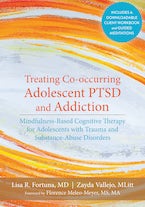In therapy sessions, lack of genuine curiosity about where the client is coming from, unrealistic or incongruent expectations, and failure to approach the whole person, not only the pathology exhibited, can significantly impact the effectiveness of therapy. That’s why mindful communication, or interpersonal mindfulness, is so important.
There are two overarching, foundational principles of interpersonal mindfulness. The first is being an unbiased witness. If while listening to a client you find your mind moving into judging, planning, anticipating, or remembering, briefly notice where your mind has strayed and gently, and firmly, bring it back to the client and what he or she is saying.
This action of bringing the mind back is performed thousands of times a day, if necessary, without self-criticism and with patience and kindness for yourself. We can break down this first principle into some key practice components.
Interpersonal mindfulness is:
-
Listening to every word of your client as if you were listening to him or her for the first time, infusing a sense of wonder and curiosity. This is sometimes called beginner’s mind.
-
Trusting in the process, in the innate internal resources of your client to heal, and in your capacity to guide the process skillfully.
-
Being open to the outcome, to whatever will arise, and to infinite possibility.
-
Accepting what your client is saying or doing, even if it is difficult to hear. Acceptance does not mean resignation, nor does it mean that you cannot be proactive in exploring with the client the internal and external resources available to work with the situation.
-
Slowing down before you begin to communicate. Formulate the intention to be present and compassionate. Soften your body and be grounded in it. Remember to inhabit your body while in communication and not to disappear from yourself.
-
Paying attention to the breath for a few moments before initiating a conversation, especially if the conversation is expected to be unpleasant. Notice if your mind moves into judgment, planning, business, and so on, and escort it back to the words that you are hearing.
-
Listening with intent, compassion, nonjudgmental awareness, and curiosity. There is no need to rehearse what you are going to say next. Be aware of your verbal and nonverbal cues such as tone, pitch, gestures, body posture, distractibility, and timing, as well as whether your spoken words are true or honest, beneficial, and kindly said.
The second foundational principle of mindful listening is approaching our interactions with the intention to serve, which is quite different from an intention to fix. Fixing or helping implies authority and conveys the message that you know more about that person than he or she does. No one, not even the person closest to us, can know more about how we feel in our own skin than we can. When we feel that we know best for someone else, we create dependency. We take away a person’s self-efficacy, self-worth, and faith and trust in him- or herself. In other words, we can listen with our minds or listen with our hearts. The mind’s tendency is to compare, judge, blame, help, fix, and criticize. When we listen instead with a compassionate mind, and an open heart, we can access our wisdom, innate intelligence, understanding, forgiveness, acceptance, patience, and trust in the other and ourselves. This way of listening has the capacity to heal profoundly, while at the same time enabling the giver—giving from abundance instead of depletion—to avoid burnout and remain fresh and nourished.
We serve with compassion and gratitude, for the opportunity to share, and for the happiness that arises when we give to others from the heart. We all belong to the community of suffering. Just as we have learned to live most of our life on automatic pilot (e.g., to drive with enough awareness not to crash, to eat barely tasting what we are eating), we have become skilled at partial, continual listening. This is listening with just enough attention to follow the conversation while the mind is going back and forth into other areas. We are so accustomed to distraction that it has become almost impossible to tune in deeply and to really listen to what our family, coworkers, and clients are saying.
 Editor’s note: This article was adapted from Treating Co-Occurring Adolescent PTSD and Addiction by Lisa Fortuna, MD, and Zayda Vallejo, MLitt.
Editor’s note: This article was adapted from Treating Co-Occurring Adolescent PTSD and Addiction by Lisa Fortuna, MD, and Zayda Vallejo, MLitt.


 2024 Peace Playbook: 3 Tactics to Avoid Clashes with Your Partner
2024 Peace Playbook: 3 Tactics to Avoid Clashes with Your Partner